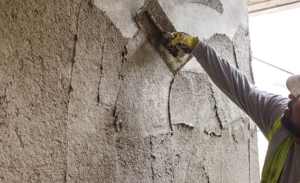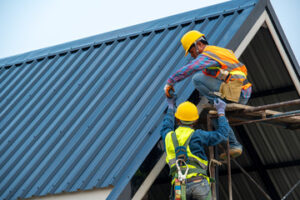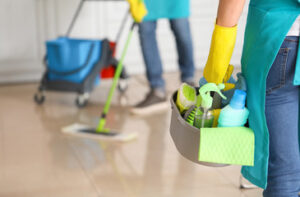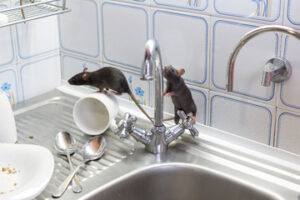The primary goal of pest control is to keep pest populations low and prevent new infestations. Preventive steps include accurate pest identification and removing food, water, shelter, and overwintering sites. Contact Pest Control Thousand Oaks now!
Some natural forces affect pest population levels, including climate, natural enemies, barriers, and availability of food, water, and shelter. Other factors influence the success of pest control methods:

Ideally, pest control strategies begin with prevention. This means creating conditions that naturally deter pests, such as eliminating food and shelter. This is most easily done in homes, where removing piles of wood, sealing cracks and crevices, caulking, and using wire wool to fill gaps in walls can prevent pests from entering or breeding. Keeping grass and shrubs away from buildings, and ensuring garbage cans and compost bins are securely sealed, are additional prevention measures. Clutter also provides hiding places for pests, so putting away stacks of paper and magazines can help keep them at bay. Getting rid of standing water in the yard and minimizing decomposing leaves and other debris can also reduce pests, as can keeping the landscape tidy.
In many cases, once a pest population has reached an unacceptable level, it is necessary to take action. This threshold is determined by a number of factors, including esthetic, health, and economic concerns. For example, a few mice in the house do not require action, but hundreds of them may necessitate extermination. Thresholds are also set for operating rooms and other sterile areas of health care facilities, where the presence of any pest is unacceptable.
Once a pest is present, scouting and monitoring are used to determine the best course of action. The most common control measures are traps, baits, and physical removal of the pests themselves. Often, however, chemical controls are needed. Chemicals can be used to prevent the spread of a pest, to kill existing populations, or to alter environmental conditions such as modifying moisture levels and temperature.
Biological control, in which the pest’s natural enemies are introduced to suppress the population, is another effective strategy. This can include parasites, predators, pathogens, or genetically modified organisms. However, there is a lag between the introduction of an enemy and the full effect on the pest population, so monitoring and other preventive measures must also be in place. Other methods are based on altering the environment by changing soil pH, adding nutrients, and planting resistant varieties. Some methods even use nematodes, microscopic worms that can be sprayed on the ground to disrupt insect life cycles.
Suppression
The goal of suppression strategies is to keep pest populations below a threshold that prevents economic or aesthetic damage. If prevention and cultural controls fail to manage a pest, chemical options may need to be considered. This can include herbicides to kill weeds, insecticides to kill insects, or fungicides to manage diseases. Chemical control methods must always be carefully monitored and applied according to label instructions.
Natural enemies are organisms that naturally prey on, parasitize, or otherwise negatively affect pest species. Some of these are native to the area where the pests occur, while others arrive by chance, such as predatory birds, nematodes, or pathogens. For example, the bacterium Bacillus thuringiensis produces a toxin that destroys the midgut of caterpillars, effectively controlling the caterpillar population. Biological control agents are also used to alter the behavior of pests, such as pheromones or juvenile hormones.
Cultural controls are ways to disrupt a pest’s environment, depriving it of food or shelter. Plowing, crop rotation, removing infested plant material from fields or greenhouses, and cleaning tillage equipment all can be effective in preventing pests’ outbreaks. Irrigation management can also be effective in suppressing some pests. Avoid long periods of high relative humidity, which encourage weed and disease growth.
Physical barriers, such as fences or netting, can be used to exclude pests. This is especially effective for fruit and vegetable growers who want to protect their crops from rodents, and for homeowners who wish to exclude birds or insects from outdoor spaces.
Other physical controls are aimed at changing the environment to make it unsuitable for pests. For instance, adding a layer of mulch or modifying irrigation systems can inhibit weed and disease growth and keep the ground and water cool, which in turn reduces pest activity.
Sometimes it is not possible or economically feasible to exclude or alter the habitat of a pest. In these cases, monitoring must be done in order to determine when the pest population reaches or exceeds an economic or aesthetic threshold and when it is necessary to take action. This monitoring usually consists of trapping or scouting for insect, mollusk, and vertebrate pests and checking environmental conditions such as temperature, moisture, and available food and shelter.
Eradication
Pest control strategies aim to prevent, suppress, or eradicate a pest infestation. In outdoor settings, eradication is more often a goal than prevention or suppression. Eradication can be difficult because pest populations tend to recover quickly. In addition, eradication efforts require a long-term commitment of human and financial resources to ensure success. A successful eradication program will also need to address a variety of environmental factors, such as habitat fragmentation and change.
Pesticides are a common part of many pest control strategies. However, misusing or overusing pesticides can lead to resistance. Incorrect application can kill beneficial insects and other organisms that help control pests. Additionally, pesticides can be carried into streams and rivers by stormwater runoff and affect water quality.
A number of chemical control methods can be used in homes, including baits and crack and crevice treatments. These are often necessary in areas where organic treatments fail to work. Be sure to hire a professional and always follow the pesticide label instructions. When choosing a pest control company, look for positive customer reviews and certifications from reputable organizations.
Biological control methods involve the use of parasites to kill pests. Parasites are organisms that live on or in a host, gaining all or most of their nourishment from the host during at least one stage of their life cycle. Examples of parasites include nematodes, fleas, and ticks. When selecting a biological control method, it’s important to find one that is safe for your family and pets.
The term “eradicate” originally meant to pull something up by the roots, like a weed. As the meaning of the word changed, so did the way that it was used. The word evolved into its current meaning in the mid-17th century, when it began to be used metaphorically for eliminating undesirable things from a garden or home.
An eradication strategy is a very large-scale effort that is typically undertaken on a global basis. It can be used to eradicate disease vectors, such as mosquitoes, flies, or rodents, or it can be used in an attempt to eliminate certain plants. It requires the participation of many individuals and organizations at local, community, national, or regional levels. An eradication effort must be verified at multiple scales, including laboratory and field studies, and must be sustainable over a long period of time.
Integrated Pest Management
Integrated pest management strategies are used to control all kinds of insects, weeds, diseases and other organisms that damage or disturb crops, landscapes, or natural areas. This approach focuses on prevention, monitoring and targeted treatments with a minimum of synthetic chemicals. It includes biological, physical, and cultural controls as well as crop rotation and the use of resistant species.
An integrated pest management program begins with a careful evaluation of the problem. This involves looking at the life cycle of the pest, its damage potential, its natural enemies and other factors that might affect its behavior or ecology. The information collected is then used to determine whether the pest poses a risk to a desired outcome. If it does, an action threshold is established to focus the size, scope and intensity of the pest control effort.
All pests have natural enemies that can control them or limit their numbers, known as biocontrol agents. These can include predators, parasitoids and pathogens. These can be introduced to the garden or used in field applications to control the unwanted pests. The use of sterile insect technology, where males are introduced to the field to prevent them from mating with wild fertile females, is another form of biological control.
The physical or mechanical methods of control involve traps, screens, barriers, fences and other devices that physically exclude pests from a desirable area. Changing the environment can also reduce pests, including using heat, cold or light to alter the plants the pests feed on. Altering the amount or water available or the chemistry of soil can also reduce pests, as can introducing new types of plants that are less attractive to the organisms.
Chemical control is used only after all other methods have been exhausted and is aimed at suppressing or killing the pests. This is usually accomplished by applying the most selective, lowest-toxic chemicals. It’s important that the correct pesticide is used at just the right time and in the proper application, however, because overuse of any pesticide can lead to resistance.
The final step in an IPM program is to monitor the crop, field or area on a regular basis. This allows you to see if your treatment was successful and to identify new problems before they become too serious. Using an online field analysis tool like EOSDA Crop Monitoring can make this task much easier, as it allows you to check the status of a crop from any location, on a daily basis.








